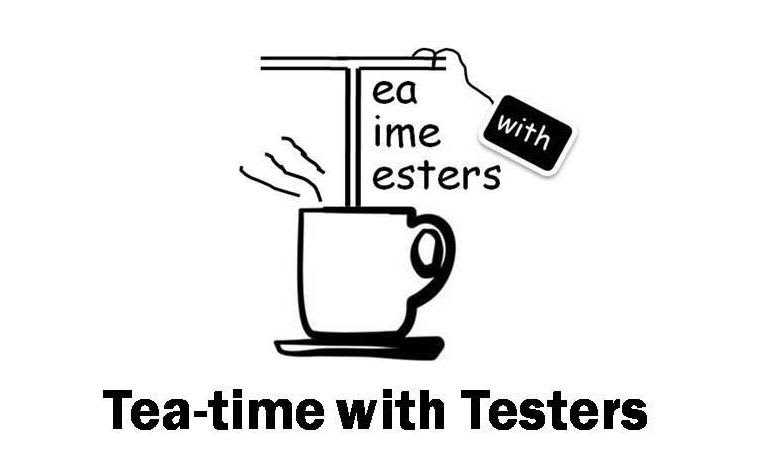An Experience Report.
The Lessons…
Good software practices overlap and help different levels within the software projects. A good software practice is not to take users or the user’s perspectives for granted. Challenge yourself by actively listening to all project stakeholders, talking with developers, and researching on your own to learn more perspectives.
The Journey…
Back in 2014, I was assigned to the projects to test the search engine optimization along with the projects which were focused on increasing traffic on the website. During the initial days, developers used to tell me what I have to test since I do not understand the impact of these changes. I use to test the same, and report the bugs.
Let me take an opportunity to explain to you in brief, what happened in the past release, and why I was there, as I have learned from the existing team members. I had understood from the team members about the previous release, including what went wrong. The company had to pay a massive penalty to Google because of the issue which was introduced in the past release, since they did not want to lose the existing customers. Specifically, the issue was while fixing and improving so many things from SEO aspects, nobody looked that we are duplicating the pages one with HTTP and another one HTTPS. Since all the web pages were duplicated in Google search, our website and all the existing web page rank started lowering down rather than increasing.
Let’s come back to what I was doing in the team, now I was trying to develop a deeper understanding of what the developer wants me to test because I was seeing a pattern. From the aspects of the team, I was lucky because I found myself in a situation that a senior tester was guiding me also. But this was for starting because soon I found myself in a situation where I was working alone since the senior test went on paternal leave. I was left alone during the critical period of the release. This senior tester was handling the whole Search Engine optimization POD(similar to SQUAD) alone along with my help for the past few months.
Since the senior tester was not present, I got the opportunity to talk to developer leads and business people. At times the conversation in the meeting was hard since I did not know what to answer when the developer lead and business people were asking me, “Did you test well”? “How confident you are with the release”? I was honest with them because I had not had much experience in this space at that particular point in time, and I was doing the best I could.
The developer lead and I used to share the same cabs while leaving the office. This is because we were living in the same locality. I had the opportunity to socialize with him, and ask him more questions, or even understand his previous experiences, and other stuff in this domain. One of the most interesting conversations was that he had explained to me that “usually, some companies have an internal SEO team and anti SEO team”. This is because many people in a company do not understand how Google algorithms work, Companies hire a dedicated team who can look from a different perspective to help the company’s SEO.
I thought this is important and he said, he is looking for our company to have something similar. To add to this, I further learned involving myself in the SEO conferences, that there are whitehat SEO experts and blackhat SEO experts.
I thought this is important and he said, he is looking for our company to have something similar. To add to this, I further learned involving myself in the SEO conferences, that there are whitehat SEO experts and blackhat SEO experts.
Wait! Now more surprises are coming for me.
1. I learned, the senior tester has cleared the interview in the U.S.A in the same company, and he will move soon post his paternal leave. My manager was also leaving the company. I will have a new manager and new senior tester who will help me while learning about other ongoing projects and new projects. The whole situation was becoming challenging although, I was confident about a little experience, which I have received while working on the domain along with the senior tester.
2. While we were in process of releasing and adapting to many changes happening internally in the team. Google declared they would be making massive changes in their search algorithm which caused our release to be moved further out to incorporate and align with these changes. From a tester’s perspective, being able to see how existing pages were impacted by the new changes allowed me to continue to learn more about testing SEO.
If I remember correctly, in those days mobile apps were becoming more popular, and Google came up with the recommendation that websites and apps should not have major differences.
I pulled my socks. I started looking at internal documents which were across teams, I found many resources such as written documentation, videos, websites, conferences et Cetra. I also found there were existing test plans, test cases, bugs reported by another team on similar aspects of what we were improving. Now, I was developing and gained more confidence because I could talk to more people and learn about Search Engine Optimization while having an active conversation with them.
Here comes my learning while tackling all the difficult situations around me:
Terminology:
I began to realize certain common terms were very useful in day-to-day contexts, like organic(natural way of searching), inorganic search(paid search). These were further divided into ON-page SEO and off-page SEO. As far as I remember, there were more categories of an SEO search, which we were tracking, like direct, paid, social, referral, display, affiliates. I found it more interesting to learn and how to track these sources of traffic. This was one aspect in which I was able to learn by working closely with developers.
Crawling
Crawling(also known as spiders) of the website is a process, so the search engine can read the pages. But there are many challenges too. Crawling is the act of snaking the homepage to learn all the connected links which exist under that home page. This process goes on until they come out from the website. It is also called the internal mesh. There are different kinds of crawlers like bots(such as Google bots or Bing), sent by a human or someone who is stealing the content from the website. So the website owner has to always monitor these aspects else they will lose business. Crawlers keep track of information whether the page needs to be indexed. Some of the information specifically it keep track of is the title, HTTP status code of web page, header and meta tags, internal and external no-follow links, paginations[rel= next], hRef tags, canonical URLs, crawl depth, empty or duplicated pages, URL filters, page category, comparing crawls et Cetra. The crawler will have information about the user agent, crawl speed, crawl limits etc.
Indexing
Indexing is a process where it stores and organizes the page in the index after understanding the page content. Google search operators are useful to find whether the webpage is indexed or not: https:// support.google.com/websearch/answer/2466433. Oh, how can I forget about Robot.txt, which also specifies the crawler which pages are open to crawl and not? Header and text can help a lot to improve indexing.
Ranking
The ranking is the process where SEO is targeted to provide the best answer available from the keyword the user is searching for. Staying up to date improves the rank of the page.
Not least, there are many websites that will suggest how to improve the rank of the webpage.
Sitelink
Sitelink, which was launched to improve Google UX, it is also called SERP. Sitelinks also appear with a search bar which the user can use directly to start his search on the website. It improves brand awareness, click-through rates, allows users to find the page they are interested in.
Rich Content
Another aspect to improve SEO on the webpage is looking to answer the below questions. Does the website have good and rich content which makes users come back to the website? For example, “ Is there duplicate content”? “automatically generated content”? “little content”? “no content”? “hidden content”? “too many contents”? “no single focus, or motive of the webpage”?
Search Keywords
Keyword optimization is done to attract more users. We must start researching which keywords are more searched by users. Understanding the target audience is key here. It can also be done with the help of related keywords and comparison which is a bit of a time-consuming process. By taking part in stakeholder meetings and listening to developers’ conversations, I was able to utilize tools to help me specifically test the keyword searches a target audience might conduct. This helped me to provide information to the stakeholders about how we could improve our keywords on the website page.
Header & Meta and other Tags
Most of the header and meta tags are used for improving SEO, such as title, description, URLs to improve the SEO. This is the reason it is good to keep them clear and relevant. Usually, alt tags are used for describing the image and it should be done properly and should have uniqueness.
Backlinking
I have also learned that backlinking from different web pages were helpful to increase the SEO of the webpage. It is also useful from a usability perspective(sometimes) because the user can understand where they are coming from.
Performance
A completely new perspective, if a webpage is loading fast then also it improves the SEO of a particular webpage.
Social Influence
Another reason where a webpage can increase the SEO is having citations or social influence on the web page. By this I mean increase SEO, be sure to plan on adding links within the website, and not the links which are moving the user from the websites, such as, affiliates.
There were many more, but I think these were the most important concept from my learning journey.
My journey of SEO testing has taught me some meaningful lessons:
- Good software practices overlap and help different levels within the software projects.
- A good software practice is not to take users or the user’s perspectives for granted.
- Challenge yourself by actively listening to all project stakeholders, talking with developers, and researching on your own to learn more perspectives.
- In foreseeing the future, we can create an automated crawler to improve further test coverage.
I grew as a tester from my journey and I hope this article will not only improve your learning beyond testing SEO but also to improve you as a tester in any domain.

Trisha Chetani
Trisha is software testers and automation enthusiast. She has been helping the team to follow testing processes and support that enable teams to deliver high-quality software in DevOps Environment. She is always enthusiastic to attend conferences, meet-ups for professional development as well as she is an active community member. Trisha is looking for opportunities to thrive in a management role. .

